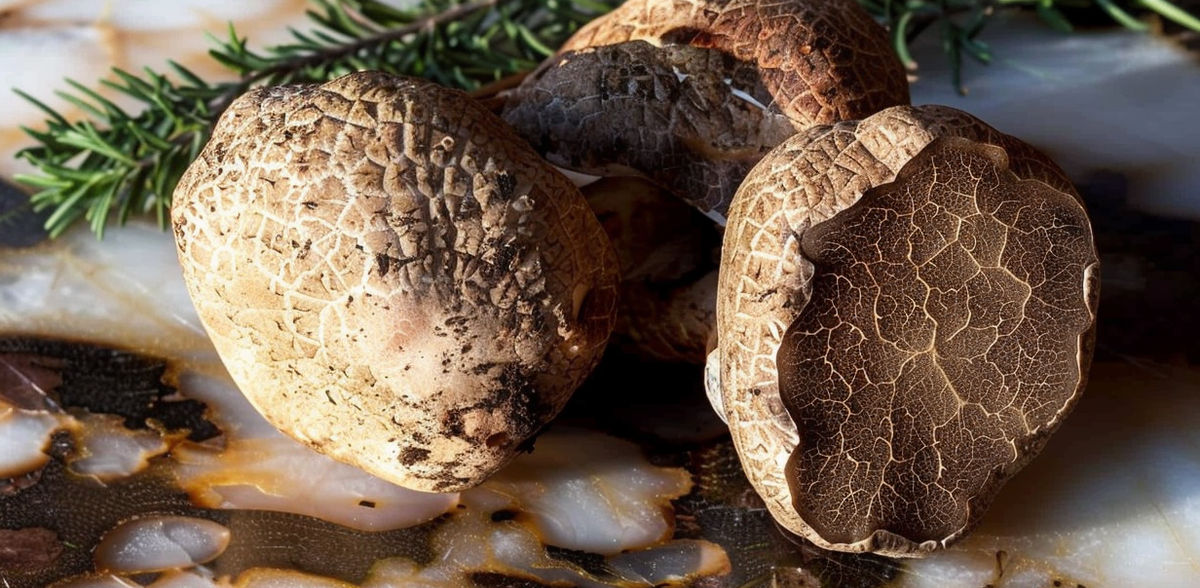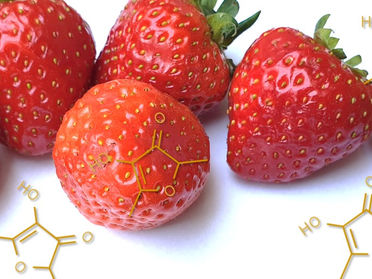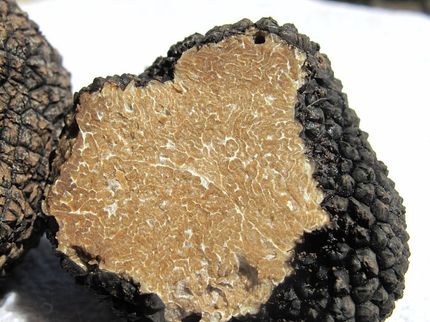New method against truffle fraud
The high-priced Piedmont truffle can hardly be distinguished from the cheaper spring truffle - fraudsters have an easy game. However, a new analysis method could put a stop to them.
Some truffle species are particularly expensive and are therefore often the target of food fraud. For example, high-priced Piedmont truffles(Tuber magnatum) are often difficult to distinguish from the cheaper spring truffles(T. borchii) on the basis of their appearance. Two scientists from the Leibniz Institute for Food Systems Biology at the Technical University of Munich have now developed a new method of analysis. This allows both truffle species to be distinguished objectively and unambiguously using just two marker compounds. "The method is also fundamentally suitable for routine analyses," explains study leader Martin Steinhaus.
Both piedmont and spring truffles are white truffles. In contrast to black truffles, white truffles have an intense aroma. As this evaporates when heated, the white truffle is not cooked with the dish, but rather shaved over the finished dish.
One of the most expensive foods
At a price of 2,000 to 3,000 US dollars per specimen, the Piedmont truffle is one of the most expensive foods in the world. In contrast, a spring truffle currently costs only 250 to 700 US dollars. The higher price of the Piedmont truffle is due to its stronger and richer aroma as well as difficulties in its cultivation. While other truffles, including the spring truffle, thrive successfully in plantations, the targeted cultivation of the Piedmont truffle has hardly been successful to date.
While there are considerable differences in price and availability, the appearance of the Piedmont and spring truffle is very similar. "Therefore, the incentive to market cheap and easily available spring truffles as Piedmont truffles is naturally great," says first author Philipp Schlumpberger.
Two truffle markers identified
As part of a project funded by the German Federal Ministry of Food and Agriculture, the two scientists from Freising have now developed a new analytical method. This allows both truffle species to be objectively distinguished using just two marker compounds. These are furan-2(5H)-one and bis(methylsulfanyl)methane.
In their study, the two researchers used the automated Solvent-Assisted Flavor Evaporation (aSAFE) method developed and established at the Leibniz Institute. With this method, heat-sensitive volatile food ingredients in particular can be isolated artifact-free and reproducibly. "This was very helpful in finding the two substances among thousands of other compounds and subsequently proving their marker properties using precise quantification methods," explains Martin Steinhaus.
Without exception, the scientists found higher concentrations of bis(methylsulfanyl)methane in the piedmont truffle samples compared to the spring truffle samples. In contrast, the furan-2(5H)-one concentration was significantly higher in all spring truffle samples than in the piedmont truffle samples.
"In summary, our data show that the quantification of the two marker compounds is a suitable analytical approach to objectively distinguish between the two truffle species," continued food chemist Martin Steinhaus. In view of the comparatively low equipment requirements for the quantitative determination, the method can be used directly in routine analysis, according to the researcher.
Note: This article has been translated using a computer system without human intervention. LUMITOS offers these automatic translations to present a wider range of current news. Since this article has been translated with automatic translation, it is possible that it contains errors in vocabulary, syntax or grammar. The original article in German can be found here.
Original publication
Other news from the department science
Most read news
More news from our other portals
See the theme worlds for related content
Topic world Food safety
Food safety is at the heart of the food and beverage industry. It ensures that the food we eat every day is not only nutritious, but also free of harmful contaminants. From field to plate, the industry monitors and regulates every step of the process with strict quality controls, advanced testing methods and continuous research.

Topic world Food safety
Food safety is at the heart of the food and beverage industry. It ensures that the food we eat every day is not only nutritious, but also free of harmful contaminants. From field to plate, the industry monitors and regulates every step of the process with strict quality controls, advanced testing methods and continuous research.






























































